| Article ID | Journal | Published Year | Pages | File Type |
|---|---|---|---|---|
| 3154916 | Journal of Oral and Maxillofacial Surgery | 2010 | 11 Pages |
PurposeWe evaluated an innovative approach for conventional surgical or transmucosal implantation applying backward planning with bone oriented crown down implant positions, followed by immediate restoration.Materials and MethodsOur workflow combined computer-assisted preoperative planning with the well-known intraoperative handling of surgical templates. To guarantee optimal accuracy, the complete process was bone borne, not soft tissue borne. Furthermore, in this concept, the definite prosthesis was manufactured on a plaster cast and fixed with technical implants inserted into the model using the same drilling template applied for intraoperative guidance of the drill. This bone-based workflow avoids the accumulation of errors throughout all steps of the treatment. In the present study, we have provided a concise quantitative quality control using 4 in vivo implants. This goal was accomplished by image matching of the preoperative plan with the corresponding postoperative computed tomography scan, applying descriptive statistics, the 1-sample t test, and the Student t test.ResultsStatistical evaluation showed that the bone-borne drilling template provides sufficient accuracy for immediate restoration with the definite prosthesis at the end of the operation. Deviation in the apex plane was 0.8 ± 0.42 mm, with 0.33 at the maximum. The angular deviation was 3.18° ± 0.78°.ConclusionsOur workflow is a promising approach with respect to handling, accuracy, and intraoperative safety.
